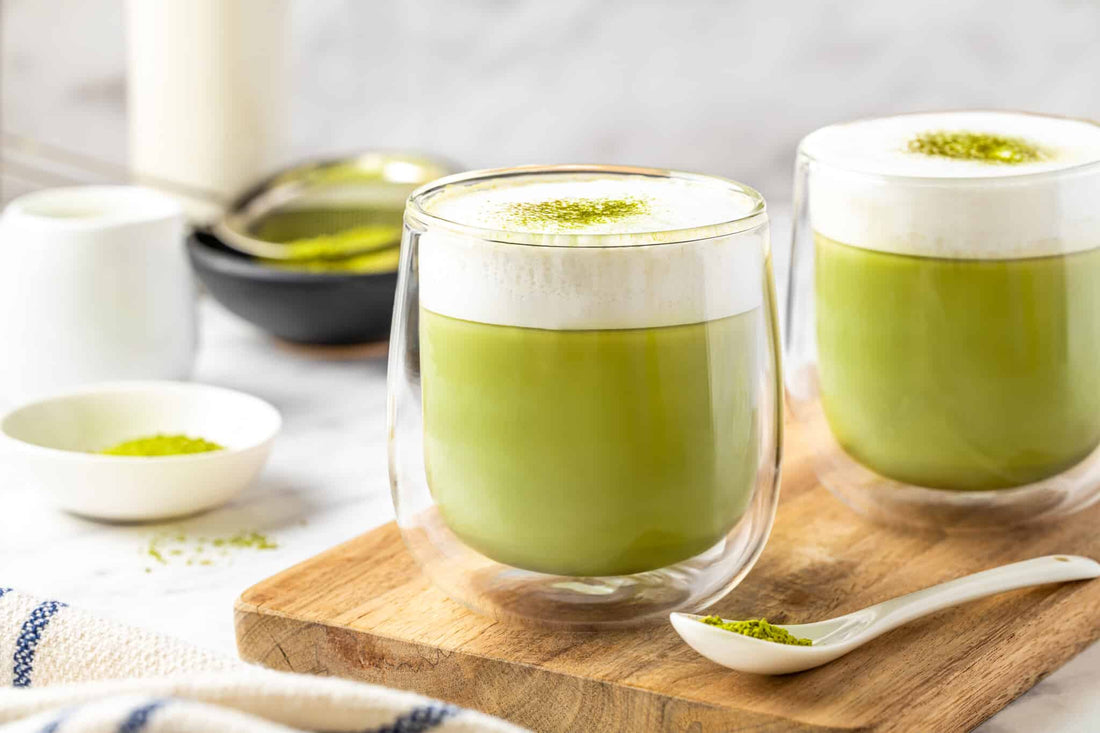
What Does Matcha Taste Like?
Share
What Does Matcha Taste Like? Exploring the Flavor Profile of This Vibrant Green Tea
Matcha tea has become more popular in recent years, known for its vibrant green color, amazing health benefits, and unique flavor profile. If you have never tried matcha, you may be wondering—what does it taste like? The taste of matcha is unique, with a combination of flavors and aromas that make it distinct from other types of tea. We think matcha is an amazing beverage of choice, and if you are curious about the flavor, read on!
What is Matcha?
Matcha is a type of green tea made from the leaves of the Camellia sinensis plant. Unlike other types of tea, matcha is made by grinding whole tea leaves into a fine powder, which is then whisked into hot water to create a frothy, creamy drink. This process gives matcha a more concentrated flavor and higher caffeine content than other green teas.
Breaking it Down: What Does Matcha Taste Like?
Matcha has a complex flavor profile that’s often described as grassy, slightly sweet, and mildly bitter. It can also have notes of umami and earthy nuttiness. The taste of matcha also depends on the quality and freshness of the tea leaves used to make the powder.
Here are some of the common taste notes you might experience when drinking matcha:
-
Grassy: Matcha is often described as grassy or herbaceous due to the high concentration of chlorophyll in the tea leaves, which gives matcha its bright green color.
-
Sweet: High-quality matcha can have a subtle sweetness that balances out other flavors.
-
Bitter: Matcha can have a slight bitterness due to tannins in the tea leaves, which add depth and complexity to the flavor.
-
Umami: Matcha has a savory, rich flavor that is often described as umami.
Ceremonial Matcha vs. Culinary Matcha
The quality of matcha can significantly change its taste.
-
Ceremonial Matcha is picked earliest in the harvest cycle when green tea leaves are at their peak nutrition and flavor. It has a brighter emerald color and higher antioxidant levels than lower-quality culinary-grade matcha.
-
Culinary Matcha is less costly and is great for baking and blending into recipes, while ceremonial grade makes the best drinking matcha.
If you’d like to dive deeper into the differences between Ceremonial Matcha vs. Culinary Matcha, check out our other blog on this topic!
Caffeine Content of Matcha
Matcha contains caffeine because it’s made from the leaves of the Camellia sinensis plant, which is also used to make green and black tea. However, the caffeine content in matcha varies depending on factors such as the quality of the tea leaves, processing, preparation, and serving size.
On average, a serving of matcha (about 2 grams of powder) contains between 25-70 mg of caffeine. For comparison:
-
An 8 oz. cup of coffee contains about 95 mg of caffeine.
-
A cup of green tea contains about 25-40 mg of caffeine.
The caffeine in matcha is released slowly into the body over time, providing a sustained energy boost without the jitters or crashes often associated with coffee. The L-theanine in matcha also has a calming effect, making it a balanced and smooth energy source. 🍵⚡
Preparing Matcha Tea
To prepare matcha, you’ll need matcha powder, hot water, a bamboo whisk, and a bowl. Here are the basic steps:
-
Heat water to just below boiling.
-
Pour a small amount of hot water into the bowl and whisk the matcha powder into a smooth paste.
-
Add the remaining hot water and continue whisking until frothy.
-
Enjoy your matcha tea!
Health Benefits of Matcha
Matcha is rich in antioxidants, which help protect against cell damage and reduce the risk of chronic diseases such as cancer, heart disease, and diabetes. Matcha also has gut-loving prebiotic benefits, making it great for IBD patients or anyone looking to support their gut microbiome. It contains L-theanine, an amino acid that promotes relaxation and improves cognitive function.
The Best Matcha Comes from Uji City, Japan
Our matcha is harvested in Uji City near Kyoto, Japan—a region known for producing some of the highest-quality matcha in the world. Our matcha is shade-grown for 20 days before harvest to enhance its bright emerald green color, increase antioxidant levels, and boost L-theanine content.
We also go above and beyond in testing for bacteria, yeast, mold, and over 500 pesticides and heavy metals to ensure the purity and potency of our matcha. Our matcha is grown without pesticides and contains high concentrations of antioxidants, L-theanine, and theobromine for optimal health benefits.
Still Wondering What Matcha Tastes Like? 🍵
Matcha has a rich history and has been enjoyed for over a thousand years. It’s prized for its calm, focused energy boost and earthy, floral flavor that complements many dishes and drinks. The incredible health benefits alone are enough of a reason to give it a shot!
I hope this blog gave you some insight into what matcha tastes like. However, matcha can have a variety of flavor profiles depending on quality, how it’s grown, and what it’s paired with! If you’re unsure where to start, try our matcha! Our quality and testing are unmatched. Whether you’re new to matcha or a seasoned drinker, it’s the perfect pick! Check it out HERE.

